Potrebujeme váš súhlas na využitie jednotlivých dát, aby sa vám okrem iného mohli ukazovať informácie týkajúce sa vašich záujmov. Súhlas udelíte kliknutím na tlačidlo „OK“.
ASTM D4429-09a
Standard Test Method for CBR (California Bearing Ratio) of Soils in Place (Withdrawn 2018) (Includes all amendments And changes 2/5/2018).
Automaticky preložený názov:
Štandardná skúšobná metóda pre CBR (California Bearing Ratio) pôd v mieste
NORMA vydaná dňa 1.12.2009
Informácie o norme:
Označenie normy: ASTM D4429-09a
Poznámka: NEPLATNÁ
Dátum vydania normy: 1.12.2009
Kód tovaru: NS-27180
Počet strán: 7
Približná hmotnosť: 21 g (0.05 libier)
Krajina: Americká technická norma
Kategória: Technické normy ASTM
Kategórie - podobné normy:
Zemní práce. Hloubicí práce. Budování základů. Podzemní práce
Anotácia textu normy ASTM D4429-09a :
Keywords:
bearing ratio, CBR, deflection , flexible pavement, CBR (California bearing ratio), Soil, ICS Number Code 93.020 (Earth works. Excavations. Foundation construction. Underground works)
Doplňujúce informácie
| Significance and Use | ||||||||||||||||||||
|
Field in-place CBR tests are used for evaluation and design of flexible pavement components such as base and subbase course and subgrades and for other applications (such as unsurfaced roads) for which CBR is the desired strength parameter. If the field CBR is to be used directly for evaluation or design without consideration for variation due to change in water content, the test should be conducted under one of the following conditions: (a) when the degree of saturation (percentage of voids filled with water) is 80 % or greater, (b) when the material is coarse grained and cohesionless so that it is not significantly affected by changes in water content, or ( c) when the soil has not been modified by construction activities during the two years preceding the test. In the last-named case, the water content does not actually become constant, but generally fluctuates within a rather narrow range. Therefore, the field in-place test data may be used to satisfactorily indicate the average load-carrying capacity. Any construction activities, such as grading or compacting, carried out subsequent to the bearing ratio test will probably invalidate the results of the test. Soils and flexible pavement components at the same location may exhibit significantly different load deflection relationships. No method presently exists to evaluate the precision of a group of non-repetitive plate load tests on soils and flexible pavement components due to the variability of these materials. Note 1—Field in-place tests are used to determine the relative strength of soils, subbase, and some base materials in the condition at which they exist at the time of testing. Such results have direct application in test section work and in some expedient construction, military, or similar operations. Also, as indicated in 4.1, field in-place tests can be used for design under conditions of nominal stability of water, density, and general characteristics of the material tested. However, any significant treating, disturbing, handling, compaction, or water change can affect the soil strength and make the prior to test determination inapplicable, leading to the need for retest and reanalysis. Note 2—Notwithstanding the statements on precision and bias contained in this standard: The precision of this test method is dependent on the competence of the personnel performing it and the suitability of the equipment and facilities used. Agencies which meet the criteria of Practice D3740 are generally considered capable of competent and objective testing. Users of this method are cautioned that compliance with Practice D3740 does not in itself assure reliable testing. Reliable testing depends on many factors; Practice D3740 provides a means of evaluating some of those factors. |
||||||||||||||||||||
| 1. Scope | ||||||||||||||||||||
|
1.1 This test method covers the determination of the California Bearing Ratio (CBR) of soil tested in place by the penetration load of the soil. This test method covers the evaluation of the relative quality of subgrade soils, but is applicable to subbase and some base-course materials. This test method is designed to test in-situ materials and corresponds to Test Method D1883. 1.2 The values stated in either SI units or inch-pound units are to be regarded separately as standard. The values stated in each system may not be exact equivalents; therefore, each system shall be used independently of the other. Combining values from the two systems may result in non-conformance with the standard. 1.2.1 In the engineering profession it is customary to use units representing both mass and force interchangeably, unless dynamic calculations are involved. This implicitly combines two separate systems of units, that is, the absolute system and the gravitational system. It is scientifically undesirable to combine the use of two separate sets of inch-pound units within a single standard. This test method has been written using the gravitational system of units when dealing with the inch-pound system. In this system, the pound (lbf) represents a unit of force (weight). However, conversions are given in the SI System. The use of balances or scales recording pounds of mass (lbm), or the recording of density in lbm/ft3 should not be regarded as nonconformance with this test method. 1.3 All observed and calculated values shall conform to the guidelines for significant digits and rounding established in Practice D6026, unless superseded by this standard. 1.3.1 The procedures used to specify how data are collected/recorded or calculated in this standard are regarded as the industry standard. In addition they are representative of the significant digits that generally should be retained. The procedures used do not consider material variation, purpose for obtaining the data, special purpose studies, or any consideration for the user’s objectives; and it is common practice to increase or reduce significant digit of reported data to be commensurate with these considerations. It is beyond the scope of this standard to consider significant digits used in analysis methods or engineering design. 1.4 This standard does not purport to address all of the safety problems, if any, associated with its use. It is the responsibility of the user of this standard to establish appropriate safety and health practices and determine the applicability of regulatory limitations prior to use. |
||||||||||||||||||||
| 2. Referenced Documents | ||||||||||||||||||||
|
Podobné normy:
Historická
1.11.2013
Historická
1.11.2013
Historická
1.11.2013
Historická
1.1.2008
Historická
1.3.2014
Historická
1.7.2008
Odporúčame:
Aktualizácia technických noriem
Chcete mať istotu, že používate len platné technické normy?
Ponúkame Vám riešenie, ktoré Vám zaistí mesačný prehľad o aktuálnosti noriem, ktoré používate.
Chcete vedieť viac informácií ? Pozrite sa na túto stránku.


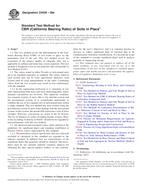
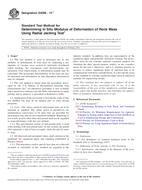 ASTM D4506-13e1
ASTM D4506-13e1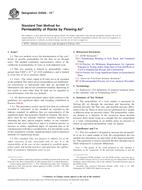 ASTM D4525-13e1
ASTM D4525-13e1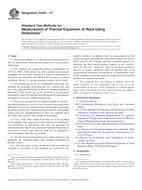 ASTM D4535-13e1
ASTM D4535-13e1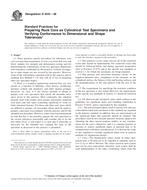 ASTM D4543-08
ASTM D4543-08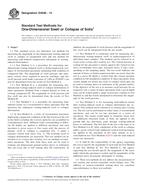 ASTM D4546-14
ASTM D4546-14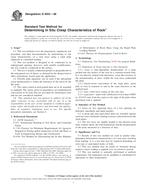 ASTM D4553-08
ASTM D4553-08
 Cookies
Cookies
